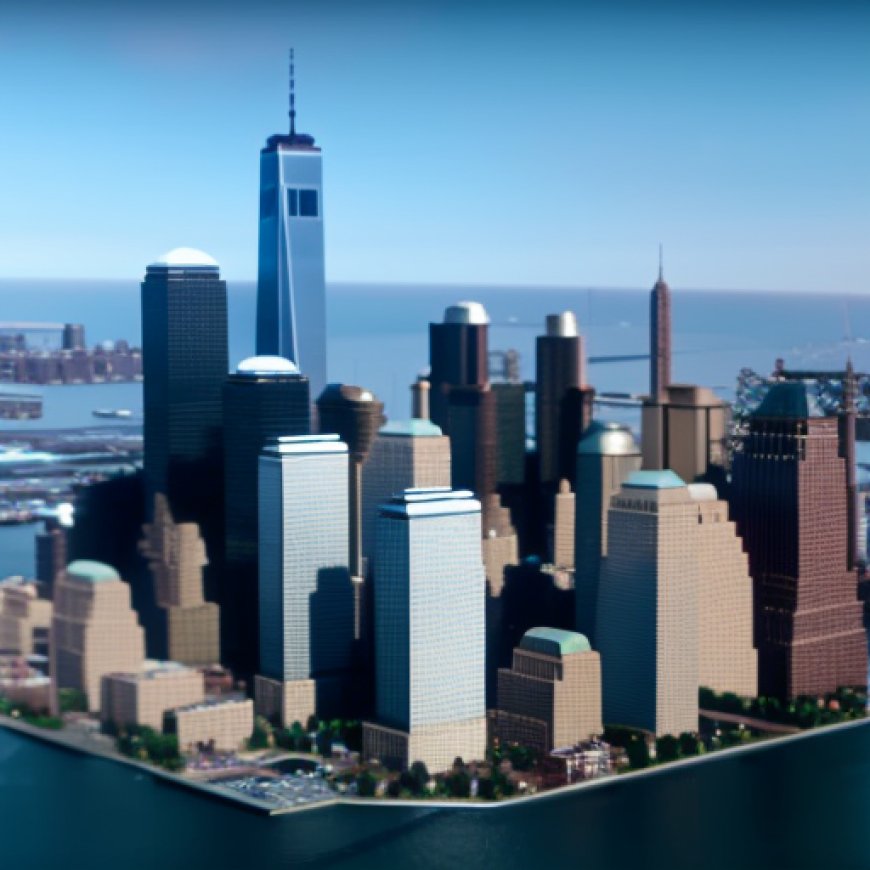An Island of Affordable Housing at the World Trade Center
An Island of Affordable Housing at the World Trade Center Curbed


Sustainable Development Goals (SDGs) and Affordable Housing
Introduction
Recently, the announcement of 400 new affordable apartments in the Financial District has brought attention to the issue of housing affordability in New York City. This article explores the significance of these developments in relation to the Sustainable Development Goals (SDGs) and highlights the challenges faced in addressing the housing crisis.
Affordable Housing and the SDGs
- Goal 1: No Poverty – The allocation of one-third of the new building at 5 World Trade Center for middle- and working-class New Yorkers contributes to reducing poverty and promoting economic diversity in a wealthy neighborhood.
- Goal 11: Sustainable Cities and Communities – The construction of affordable housing helps create inclusive and sustainable communities, providing opportunities for individuals from diverse backgrounds to live and work in the same neighborhood.
- Goal 10: Reduced Inequalities – By reserving apartments for people who lived and worked near the old World Trade Center and first responders, this development aims to address inequalities and provide housing opportunities for specific groups.
Challenges in Addressing the Housing Crisis
- The Faircloth Amendment restricts the use of federal funds for constructing new apartments, limiting the available solutions to the housing crisis.
- NIMBYs (Not In My Backyard) in affluent low-rise neighborhoods and inner-ring suburbs hinder further construction, pushing new developments into areas with expensive land prices.
- Profit-driven developers prioritize luxury and superluxury housing, making it difficult to create affordable housing options without significant incentives and zoning variances.
Limits of Set-Asides
While set-asides like the one at 5 World Trade Center provide housing opportunities for middle-class individuals, they do not address the needs of those who are homeless or have nowhere to live. The income tiers set for these apartments may not be sufficient to alleviate homelessness, highlighting the limitations of such initiatives.
Neighborhood Services and Cultural Gaps
One challenge faced by residents of these affordable apartments is the lack of neighborhood services. The Financial District may not provide easy access to supermarkets or hardware stores, making it less convenient for middle-class individuals. Additionally, the cultural and lifestyle differences between extremely affluent residents and market-rate neighbors may create a sense of isolation and inequality.
Conclusion
Despite the challenges and limitations, the availability of affordable housing options like those at 5 World Trade Center is still a positive outcome. These developments contribute to the SDGs by addressing poverty, promoting sustainable communities, and reducing inequalities. However, it is important to continue exploring comprehensive solutions to the housing crisis that cater to a wider range of income levels and provide necessary neighborhood services.
SDGs, Targets, and Indicators in the Article
1. Which SDGs are addressed or connected to the issues highlighted in the article?
- SDG 1: No Poverty
- SDG 10: Reduced Inequalities
- SDG 11: Sustainable Cities and Communities
2. What specific targets under those SDGs can be identified based on the article’s content?
- SDG 1.4: By 2030, ensure that all men and women, in particular, the poor and the vulnerable, have equal rights to economic resources, as well as access to basic services, ownership, and control over land and other forms of property, inheritance, natural resources, appropriate new technology, and financial services, including microfinance.
- SDG 10.2: By 2030, empower and promote the social, economic, and political inclusion of all, irrespective of age, sex, disability, race, ethnicity, origin, religion or economic or other status.
- SDG 11.1: By 2030, ensure access for all to adequate, safe, and affordable housing and basic services and upgrade slums.
3. Are there any indicators mentioned or implied in the article that can be used to measure progress towards the identified targets?
The article mentions the following indicators:
- Number of affordable apartments allocated for middle- and working-class New Yorkers
- Income tiers set for the affordable apartments
- Availability of essential services (supermarket, hardware store) in the neighborhood
- Level of social and cultural integration between different income groups in the building
Table: SDGs, Targets, and Indicators
| SDGs | Targets | Indicators |
|---|---|---|
| SDG 1: No Poverty | SDG 1.4: By 2030, ensure that all men and women, in particular, the poor and the vulnerable, have equal rights to economic resources, as well as access to basic services, ownership, and control over land and other forms of property, inheritance, natural resources, appropriate new technology, and financial services, including microfinance. | – Number of affordable apartments allocated for middle- and working-class New Yorkers – Income tiers set for the affordable apartments |
| SDG 10: Reduced Inequalities | SDG 10.2: By 2030, empower and promote the social, economic, and political inclusion of all, irrespective of age, sex, disability, race, ethnicity, origin, religion or economic or other status. | – Number of affordable apartments allocated for middle- and working-class New Yorkers – Level of social and cultural integration between different income groups in the building |
| SDG 11: Sustainable Cities and Communities | SDG 11.1: By 2030, ensure access for all to adequate, safe, and affordable housing and basic services and upgrade slums. | – Number of affordable apartments allocated for middle- and working-class New Yorkers – Availability of essential services (supermarket, hardware store) in the neighborhood |
Behold! This splendid article springs forth from the wellspring of knowledge, shaped by a wondrous proprietary AI technology that delved into a vast ocean of data, illuminating the path towards the Sustainable Development Goals. Remember that all rights are reserved by SDG Investors LLC, empowering us to champion progress together.
Source: curbed.com

Join us, as fellow seekers of change, on a transformative journey at https://sdgtalks.ai/welcome, where you can become a member and actively contribute to shaping a brighter future.







